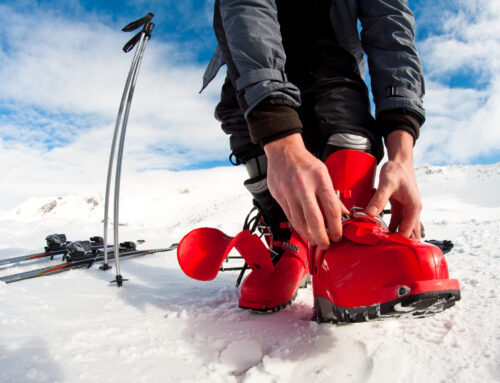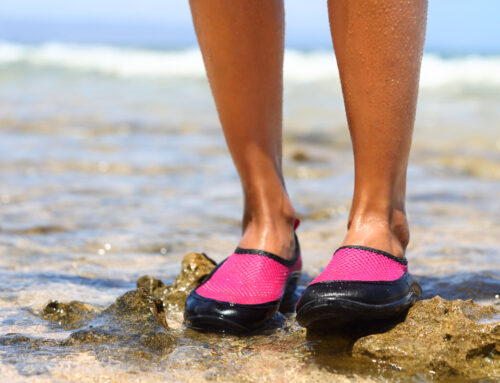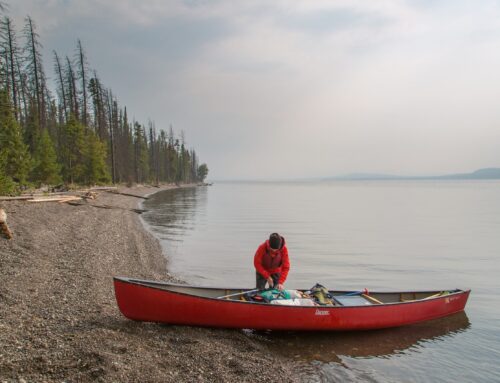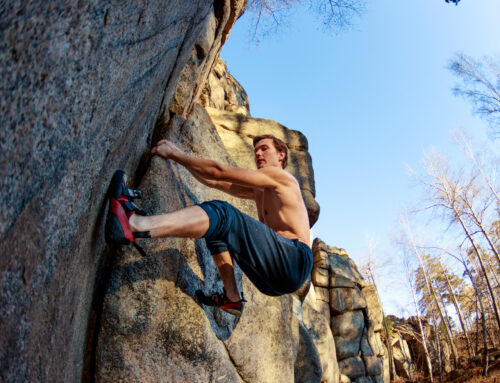Updated July 17, 2023
One of the most important pieces of gear any skier or snowboarder should have is a helmet. Sure, if you go to any resort, you’ll see a handful of people without helmets flying down the slopes. As people who spend dozens of days a year on the slopes, we would recommend everyone wear a ski helmet when you’re skiing or riding, no matter how much experience you have. Helmets not only protect you from head injuries, but also provide a source of warmth while you’re out on the slopes. Through research and testing, we created this comprehensive guide to the best ski helmets to help you choose the perfect helmet for your safety, preferences, and budget.
Click here to jump down to our reviews of the best ski helmets

What to Look for In A Skiing/Snowboarding Helmet
Construction & Materials
Every ski helmet consists of an outer hard shell and an inner liner, plus an adjustable chin buckle to keep it on your head snugly. They’ll also typically have vents, a goggle strap, adjustment mechanisms, and some kind of safety certification (more on this below). While many helmets look similar on the outside, their construction and materials are incredibly important, as they dictate the helmet’s ability to protect you in case of impact to the head.
All reputable ski helmets will have an ASTM F2040 certification, which is the minimum standard for production of recreational snow helmets. However, you’ll also see a lot of helmets that have Multi-directional Impact Protection Systems, or MIPS. MIPS is a helmet design element where different pieces of the helmet spin when under impact – you can read more about the actual technology here. The reason why MIPS helmets typically command premium prices is because this technology has been patented, and has been thoroughly tested for best-in-class protection.
Does this mean non-MIPS helmets are unsafe? Not necessarily. As you’ll see in our list, not every helmet is MIPS, but all of them are ASTM F2040 certified. This means that they meet the safety standards required for snow sports, but they do not utilize the specific MIPS technology.
Breathability
Every ski helmet comes with vents, but depending on what kind of skiing or riding you’ll be doing, you may need more or less ventilation. For example, if you do a lot of backcountry touring or resort riding in warm temperatures, a higher number of adjustable vents is helpful in circulating air around your head. Alternatively, for higher-altitude or colder-weather skiers, a helmet that can keep heat in may be more essential.
Comfort & Fit
This will vary from person to person, but it’s important to try on a helmet before committing to it. Why? Because you’ll definitely want something that feels good on your head. While we can comment all day about the comfort of the liners, straps, and adjustment systems, we can’t tell you how a specific helmet will feel on your own head. With that said, if you choose to oder online, make sure to do so from a reputable company like REI or Backcountry that has a generous return policy should you decide a helmet isn’t the right fit for you.
Price
While we aim to keep price out of the equation when we’re evaluating each of the individual products, it’s absolutely an important factor to consider when you’re choosing a ski helmet for yourself.
There’s no sugar coating it: ski helmets can be very expensive. Typically, you’ll find that high-quality ski helmets range from $80 to over $300, with MIPS-certified helmets stacked toward the higher end of that range.
For the purposes of this review, we’ve grouped these ski helmets into three price tiers:
- $ = Under $100
- $$ = $100 to $200
- $$$ = $200+
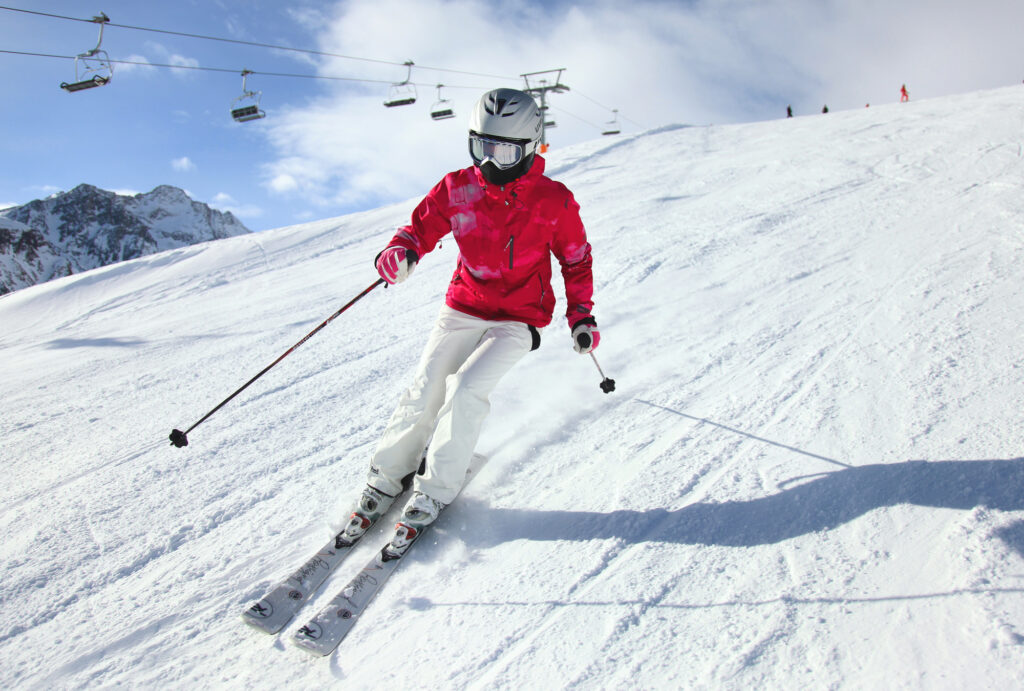
Best Ski Helmets for Every Budget
To narrow down our list of the best ski helmets, we performed our research just like any customer would before making a buying decision to bring you the most practical, down-to-earth, and realistic information about each jacket. We know research can be time-consuming and overwhelming, so we sifted through hundreds of reviews and tested several products in-store, at home, and on the slopes to bring you this list of the best ski helmets.
Smith Vantage MIPS
Best Overall & Best Backcountry Helmet
- Price: $$$
- MIPS? Yes
- Notable Features: AirEvac adjustable ventilation with 21 vents, Boa adjustments, plush liner
- Pros: Very comfortable, easily adjustable, top-of-the-line construction and materials
- Cons: Expensive
With fantastic breathability, adjustability, and comfort, the Smith Vantage MIPS helmet is, in our opinion, one of the best ski helmets on the market today. While it’s definitely one of the more expensive options, you’ll get what you pay for in a helmet that’s got all of the necessary comfort and safety components plus a few high-end features that will add to your skiing or riding experience.
Containing 21 adjustable vents, you’ll get the most versatile breathability and temperature regulation of any other helmet on our list. The ventilation system is perfect for both resort skiers/riders and those who enjoy backcountry touring, as you can simply open or close the vents when you want to stay cooler or warmer. We evaluated the more expensive Smith Quantum MIPS, and the comparable Anon Prime MIPS and Oakley Mod5 MIPS helmets for this category, but the Vantage won out on basically every dimension – weight, construction, and comfort.
Additionally, the helmet’s boa system means you can adjust it to your own sizing and comfort level. In addition to these comfort aspects, the liner is also quite comfortable. There was no detail that was overlooked when it came to designing the Smith Vantage helmet!
While it’s got everything you could want in a helmet, the Smith Vantage does have a few nuances that may impact your decision to buy. Many customers say that this helmet tends to run small, so we’d recommend sizing up if you’re on the cusp of two different sizes. Additionally, it’s on the very expensive range of the helmets on our list, so if you’re on a budget and are willing to sacrifice comfort and breathability, there may be a more suitable, less expensive option for you on this list.
Note: There are two versions of the Smith Vantage – one with MIPS and one without. We’d strongly recommend getting the MIPS version as it’s not too much more expensive and well worth the extra protective technology.
CHECK REVIEWS & PRICES FOR MEN’S SMITH VANTAGE MIPS:
CHECK REVIEWS & PRICES FOR WOMEN’S SMITH VANTAGE MIPS:
Giro Ledge MIPS
Best Budget Helmet
- Price: $
- MIPS? Yes
- Notable Features: Removable earpads, AutoLoc adjustment system
- Pros: Affordable MIPS protection
- Cons: Cheaper, less comfortable liner materials than higher-end helmets
If you are looking for a fantastic no-frills option to protect your head, the Giro Ledge MIPS is one of the best ski helmets on a budget. This unisex helmet is designed for shredding the slopes and has all of the basic things you’d want in a helmet – an inner liner, MIPS hard shell construction, and an adjustable frame – for less than $100. In terms of value for money, there are a few that offer more than the Giro Ledge.
There were several budget helmets we considered, but the Giro Ledge won out over all of them because of its inclusion of MIPS technology. Neither the Smith Holt nor the Wildhorn Drift (below) have MIPS technology, although some customers mention that the Ledge is slightly less comfortable than the Smith Holt or the Wildhorn Drift.
Giro Ledge is not the most comfortable or the most luxe helmet on the market, but it’s got the basic safety requirements down at a reasonable price. If you’re wanting something a bit more comfortable, adjustable, or breathable, consider some of the higher-end helmets on this list. However, if you simply want to protect your head at an affordable price, you should definitely consider the Giro Ledge.
Note: There are two versions of the Giro Ledge – one with MIPS and one without. We’d strongly recommend getting the MIPS version as it’s just slightly more expensive and well worth the extra protective technology.
CHECK REVIEWS & PRICES FOR GIRO LEDGE MIPS:
Salomon MTN Lab
Best Ultralight Helmet
- Price: $$
- MIPS? No
- Notable Features: Ultralight 13 oz weight, included liner
- Pros: Extremely light, perfect for backcountry touring for those who want to cut down on weight
- Cons: Bare-bones in terms of comfort and features, non-adjustable ventilation
If ultralight is your preference, there are few better options on our list of the best ski helmets than the Salomon MTN Lab. Weighing in at just 10.5 ounces, this helmet is the lightest option on our list by far, without sacrificing on the necessary features of a helmet – liner inserts and adjustability, in particular. While the Salomon MTN Lab does not have a MIPS option, it is designed to be as light as possible without sacrificing durability.
With an adjustable dial and lots of ventilation, this helmet is especially beloved for backcountry touring, where every extra ounce of weight matters. There’s a removable Merino wool inner liner for comfort and some heat retention, although it’s not quite as robust as other, warmer models on our list. However, it provides lots of air flow through its several large vents. On the other hand, the vents don’t close, so again, this isn’t a great helmet for retaining warmth.
CHECK REVIEWS & PRICES FOR SALOMON MTN LAB:
Oakley Mod5 MIPS
Honorable Mention
- Price: $$
- MIPS? Yes
- Notable Features: Modular Brim System, Boa adjustment, removable liner and ear pads
- Pros: Modular Brim System with two sizes of brims, fine tuned adjustment system
- Cons: Ear pads not very compatible with headphones, somewhat incompatible with non-Oakley goggles
One of the most respected and beloved ski helmets on the market today is the Oakley Mod5 MIPS helmet. It’s a high-end helmet with lots of customization options for those who want to be able to change configurations based on the conditions. What makes the Oakley Mod5 especially unique is its Modular Brim System (MBS), which includes two brim sizes you can choose from depending on your needs. The MBS also includes adjustable ventilation so you can control heat retention or air flow to your liking. There’s fine tuned adjustments available via a Boa adjustment system, meaning you can customize the fit to your liking.
While the Oakley Mod5 was a contender for our Best Overall category, it was lacking in two specific areas: ventilation and compatibility with non-Oakley goggles. Because of its MBS design, the heat reduction isn’t as seamless as in the Smith Vantage. As a result, it feels a bit less breathable, especially in warmer conditions or in the backcountry where good airflow is a must.
Some customers also complain of difficulties using the Oakley helmet with non-Oakley goggles. While this isn’t a complete deal breaker (Oakley makes some incredible goggles!), it could be a minor annoyance if you have a favorite pair that’s not compatible.
CHECK REVIEWS & PRICES FOR OAKLEY MOD5 MIPS:
Wildhorn Drift
Honorable Mention
- Price: $
- MIPS? No
- Notable Features: Adjustable vents, removable ear flaps, official USA Ski & Snowboard supplier
- Pros: Lightweight, affordable, comfortable
- Cons: Off-brand, non-MIPS
If you’re looking for some of the fancier features like fine-tuned adjustments and adjustable vents without paying some of the steeper prices of major brands, the Wildhorn Drift is a fantastic lesser-known option. Wildhorn is a bit of a wild card on our list – it’s not sold on major retailers’ sites like REI or Backcountry, but they’re an official supplier to the USA Ski & Snowboard Team, so they definitely meet the standards necessary for riding the slopes.
In terms of features, there are lots of things this helmet has that many other budget helmets do not, including adjustable ventilation and fine-tune adjustment mechanisms. The liner is comfortable and soft, and removable ear pads provide warmth where you need it the most on cold and snowy days.
The reason we’re recommending this helmet is because we have a lot of first-hand experience with this helmet, and we would say it’s great for anyone looking for comfort and breathability on a budget. While it does not have MIPS nor the bells and whistles of a much fancier, high-end option like the Smith Vantage, it’s a fantastic and comfortable option for less than $100. We’d consider it more comfortable than the Smith Holt below and the Giro Ledge above, but we didn’t choose it for our Best on a Budget because it doesn’t have a MIPS option.
CHECK REVIEWS & PRICES FOR WILDHORN DRIFT:
POC Obex SPIN
Honorable Mention
- Price: $$
- MIPS? No
- Notable Features: SPIN technology, adjustable ventilation, several colors
- Pros: Affordable high-end option, stylish, very durable reputation
- Cons: Only top vents close, less comfortable liner, some suggest this is not compatible with non-POC goggles
POC is a Swedish brand that makes ultra durable snow sports equipment, and the POC Obex SPIN helmet is one of the best ski helmets they sell. While it is technically a non-MIPS option, the proprietary SPIN technology offers similar protection by way of POC’s signature cushioned liner. We also really love the style of this helmet. Of all of the different helmets we evaluated, POC had one of the widest varieties of colors available. For comfort and style, the POC Obex Spin is a dependable and well-respected option.
Despite its light weight, some users mention that the helmet feels bulky compared to others. There are also some complaints that this helmet isn’t compatible with non-POC goggles, which can be tough if you have a favorite pair. However, it’s a fantastic option if you’re hoping for some higher-end features without the high price tag of the premium Smith models.
CHECK REVIEWS & PRICES FOR POC OBEX SPIN:
Best Ski Helmets: Side-By-Side Comparison
| PRODUCT NAME | PRICE |
|---|---|
| Smith Vantage MIPS | $$$ |
| Giro Ledge MIPS | $ |
| Salomon MTN Lab | $$ |
| Oakley Mod5 MIPS | $$$ |
| Wildhorn Drift | $ |
| POC Obex SPIN | $$ |
| MIPS? | VENTS | COMFORT |
|---|---|---|
| Yes | 21 | High |
| Yes | 9 | Low |
| No | 23 | Medium |
| Yes | N/A | High |
| No | 10 | Medium |
| No | 10 | Medium |
Choosing the Best Ski Helmet For You
If there’s anything you should take away from this guide, it’s that there is no “one size fits all” option for everyone. While we’ve listed our recommendations some of the best ski helmets on the market, some will work better for you than others depending on your circumstances, activities, personal preferences, and body type.
Again, it’s important to order from reputable websites that enable returns, so you can try on your pick(s) before fully committing to them. For making any big gear purchases, we love REI and Backcountry – both have generous return policies and offer great seasonal sales where you can get many of these items at a discount.
Only you can decide which one of these is the best ski helmet for you, so make sure the one you go with fits you well and is comfortable.







